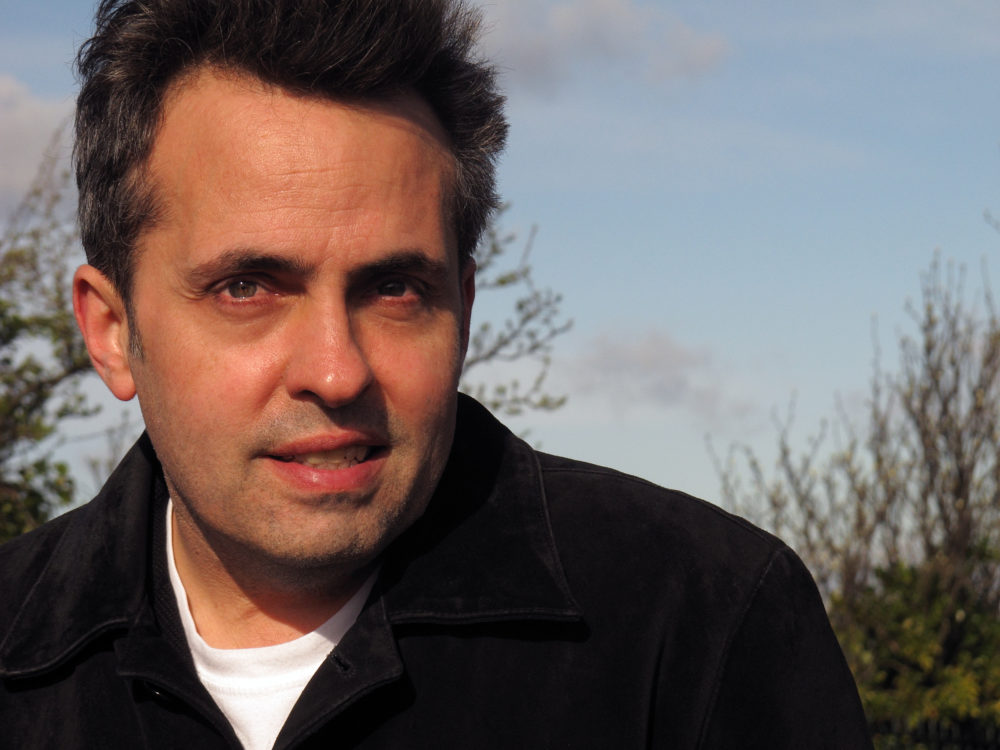Kendall Messick (b.1965) is an artist who constructs installations with still photography, film, video and an ever-evolving assemblage of two and three-dimensional media in order to tell stories.
According to Messick, “At the core of my ongoing body of work is an exploration of memory, intimacy, acceptance and humanity. I strive not only to preserve and share stories that resonate on an emotional level, but to inspire viewers to reflect on their own life experiences.”
Having studied at the International Center of Photography and the School of Visual Arts in New York City, Messick was the still photographer and co-creator of the acclaimed documentary video There is No Such Word as Can’t (1998). During the winter of 1999, he worked in Eastern Europe as the associate producer and still photographer for Here and Now, a documentary film on the Gypsies of Bulgaria.
Messick’s photographs are represented in numerous public and private collections, including the High Museum of Art, the Smithsonian Institution, the Museum of Fine Arts, Houston, and the Museum of Modern Art.
Corapeake
Messick’s first significant body of work was Corapeake (1995-2002). This award-winning project intimately documented the remembrances of elderly African-American residents of Corapeake, North Carolina through the use of still photography, audio recordings, and film. While the stories of Corapeake originate with African-Americans living in a small town, the universal themes of love, loss, hope, and faith reverberate well beyond this community, immortalizing and celebrating a disappearing way of life once typical throughout rural America during the early and mid-twentieth century.
According to Michael Wilmington of the Chicago Tribune, “Corapeake is a human chronicle of great sympathy, warmth and insight, photographed and edited with seemingly effortless artistry.”
The project culminated in a feature-length documentary film, directed by Messick, and an installation-based exhibition that has traveled to museums and galleries since 2002. The film, Corapeake, has been broadcast repeatedly by a number of PBS affiliates throughout the country, and was named a United States pre-selection finalist for INPUT 2003, which showcases the best of public television programming from around the world.
The Projectionist
The Projectionist (2001-2007) explores one man’s lifelong fascination with the golden age of film and, in particular, the grand movie palaces of the early 20th Century. Gordon Brinckle (1915-2007) spent his working life as a movie projectionist in Middletown, Delaware. He was driven by a dream to own a movie palace like the ones he frequented as a boy, leading him to conceive and construct magical theatre environments, beginning in his childhood basement in the early 1930’s, and culminating with The Shalimar Theatre that he built over the course of almost 50 years in the basement of his adult home. While almost no one else knew of The Shalimar’s existence, Messick was introduced to the theatre as a boy and returned 25 years later to preserve and celebrate Brinckle’s dream.
The incorporation of mixed media was further expanded with The Projectionist exhibition. Messick’s still photographs of Brinckle and his hidden “theatre of renown” were presented alongside Brinckle’s original theatre drawings spanning more than 60 years, as well as the Brinckle’s own Shalimar Theatre (1959-2007) that was meticulously preserved and rebuilt to travel with the exhibition, functioning as the venue in which audiences view Messick’s short documentary of Brinckle’s life story.
After seeing Messick’s film, filmmaker Albert Maysles noted, “In The Projectionist, Kendall Messick has preserved Brinckle’s important body of work in a way that is equal to the artistry of the author himself. His film is both tender and authentic in the greatest sense.” This project has garnered both critical and curatorial acclaim since it was launched in 2007. The Projectionist, a critically-acclaimed companion book to the traveling exhibition, was published by Princeton Architectural Press in the fall of 2010.
Impermanence
Messick began work on Impermanence in 2006, immediately after a devastating fire ravaged his home and studio. With Impermanence, Messick turns the camera on himself for the first time in an effort to come to terms with the experience of the fire and its aftermath. According to the artist, “the Impermanence story is not only one of loss, but of rebirth, one of destruction, but of creation, or one of horror but of beauty.” The inaugural installation of this highly-personal body of work was launched in Messick’s meticulously (and selectively) restored turn-of-the-century home in November, 2009 and remained on display for over a year.
The Impermanence exhibition was co-curated by Andrea Douglas, former Curator of Exhibitions at the University of Virginia Art Museum. Douglas sees Messick’s body of work as “An emotive, analytic depiction of life’s transformative nature,” and finds his images reminiscent of Aaron Siskind’s 1960s abstractions of dripping paint, graffiti, and peeling walls. “But, unlike Siskind’s transcendent sensibility,” writes Douglas, “[Messick] calls attention to the details, suggesting a more intimate and less abstract relationship to the image.” The Impermanence exhibition combines Messick’s still photography with a short film created by the artist, bronze sculptures of select remains, and artifacts that were transformed by fire, smoke, and water.
Visión Ciega (Blind Sight)
Taking its name from one of the photographs that Messick took while studying in Bogotá, Colombia in the 1980s, Visión Ciega is a deeply-personal exploration of what it means to see, and to be seen. Many of the images at the core of this project are portraits, but not in the traditional sense. Rather, many of the subjects have either been photographed without their knowledge, are turned away from the camera, or are caught in the act of observing the viewer for the first time.
Those of us living in modern, over-crowded cities are constantly observing, and are observed by one another, but these images are designed to make us consider the question of whether we actually SEE one another, and, by extension, whether we are capable of really seeing ourselves clearly, other than in hindsight.
When Messick was living and studying in Bogotá 34 years ago, he had no idea that he would later become an artist. And yet, looking back, he has been able to recognize the seeds of his creativity in a short story that he wrote while studying with the now-famous Colombian poet and novelist, Piedad Bonnett. Inspired by a dream, the story is steeped in the tradition of magical realism, and the haunting and mysterious photographs in this exhibition are an extension of that celebrated South American literary tradition.
The exhibition made its world premiere in Bogotá, Colombia in August 2019, to extremely strong critical response, and a limited-edition book that will include additional photographs, as well as the original short story, is in the works.
Swann Song
Kendall Messick’s forthcoming project, Swann Song, will be launched in 2020. This photography, film, and installation-based exhibition chronicles the day-to-day life of the unique and eccentric New York actress Elaine Swann (1919-2015) and her never-ending quest for stardom.

